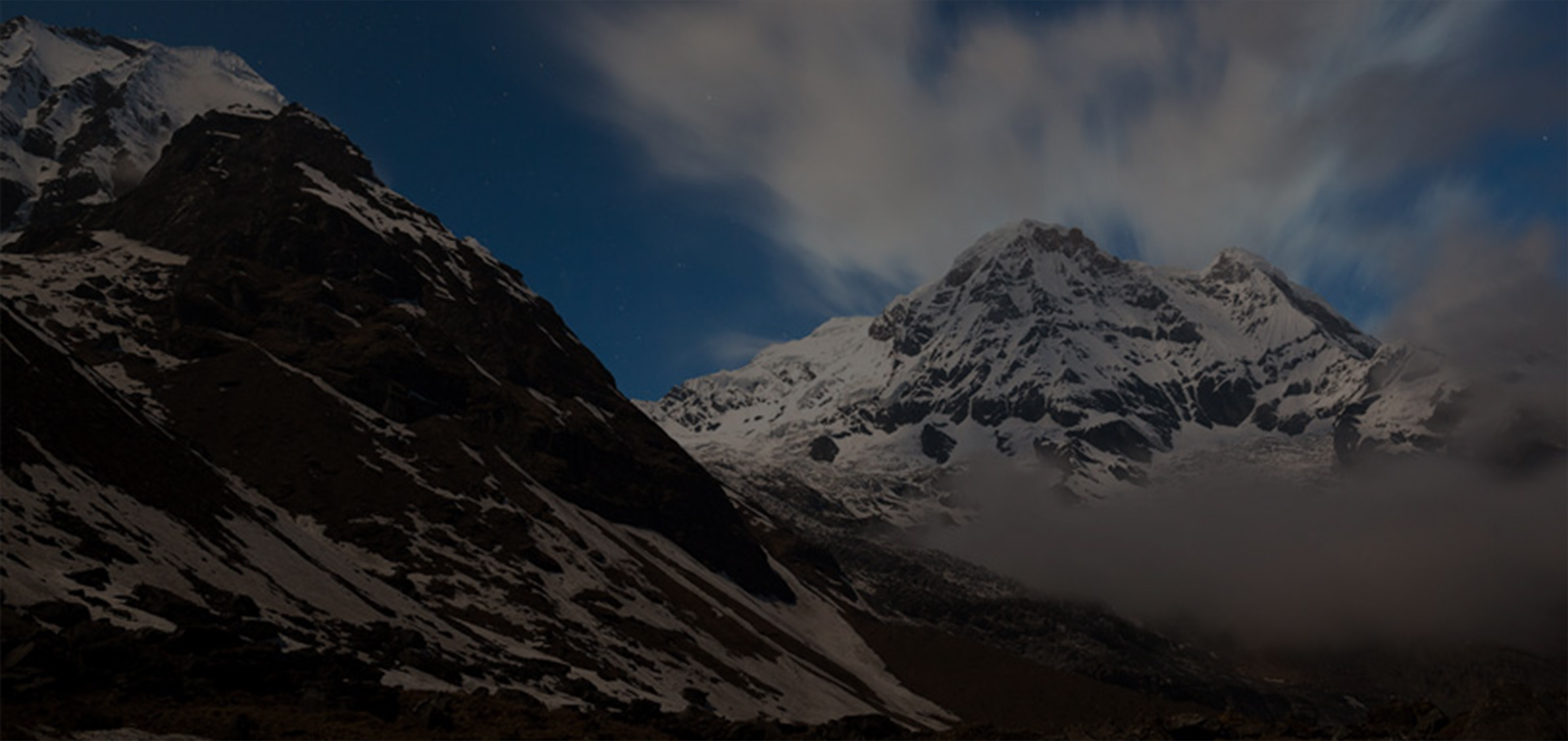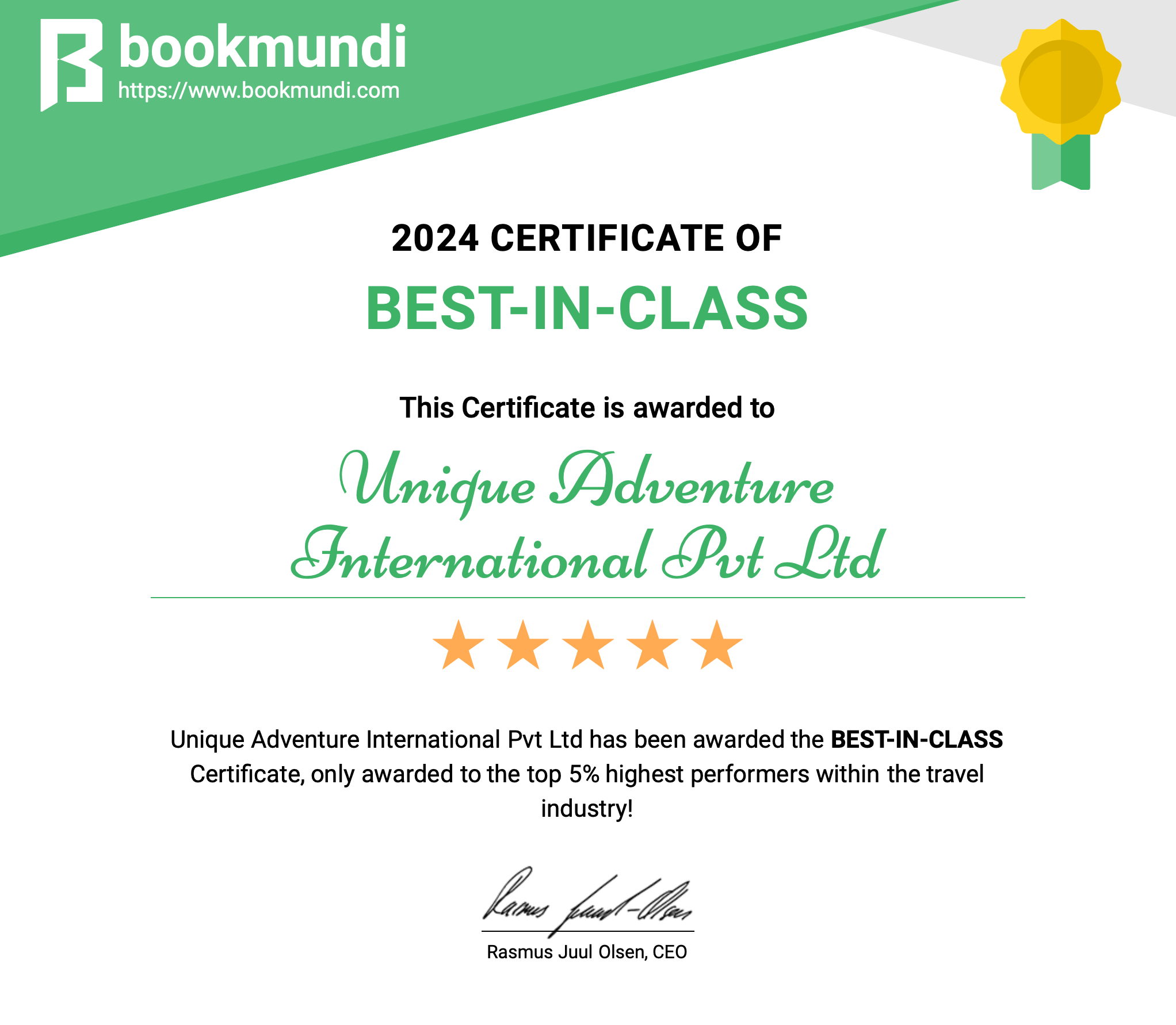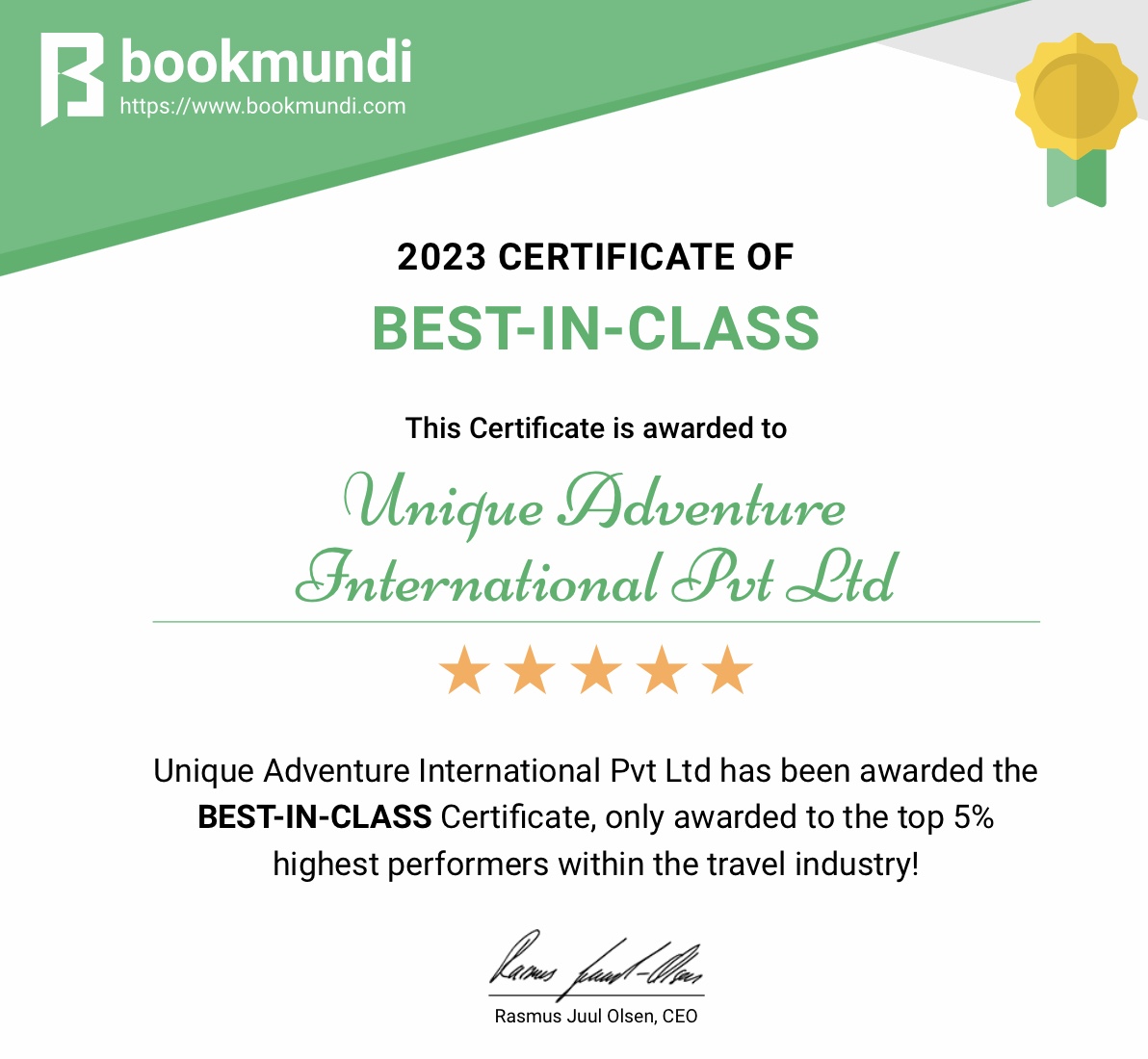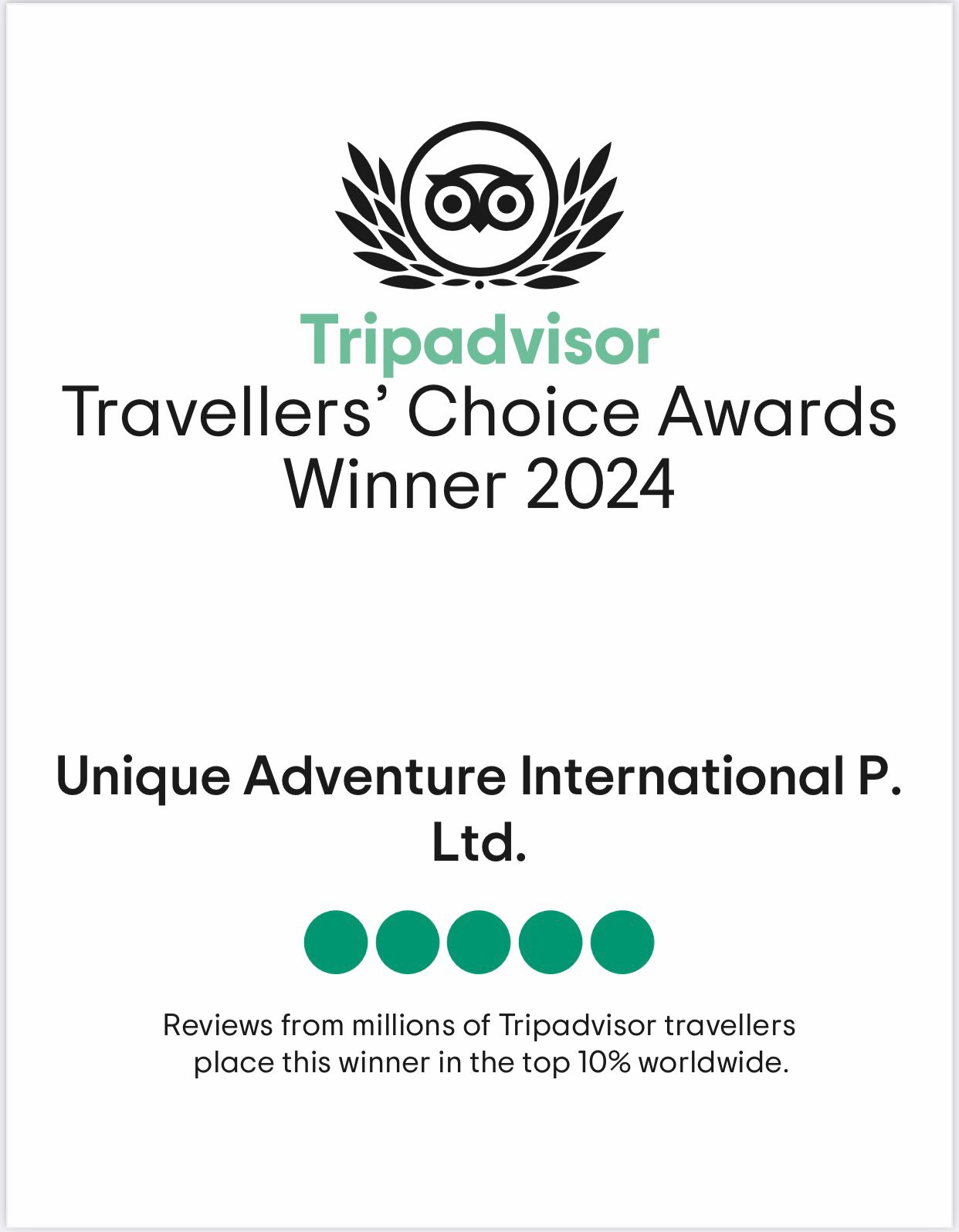Overview
Climbing Mount Everest, the highest peak in the world, is a lifelong dream for many adventure seekers, symbolizing human endurance, determination, and the spirit of exploration. Also known as the roof of the world, Everest’s daunting heights and snow-covered peaks have captivated climbers for decades, each hoping to reach the summit that sits 8,848.86 meters above sea level.
The Mount Everest climbing guide is essential for those attempting this monumental challenge, offering expertise on the dangers, preparation, and techniques required for such an ambitious feat. The breathtaking heights and iconic status make Everest one of the most desired and challenging achievements in mountaineering. However, reaching the summit is a journey not only to the top of the world but also to the limits of human potential. Its absolute scale, extreme altitudes, and awe-inspiring views make it both a test and a dream for those who dare to take it in.
Climbing Mount Everest is a huge challenge that requires more than just physical strength. The guide for climbing Mount Everest covers the costs involved, such as permits, gear, and supplies that often cost tens of thousands of dollars. Mentally, the climb is extreme, with isolation, exhaustion, and the constant dangers of altitude sickness, avalanches, and bad weather. The physical strain is intense, with each step becoming difficult as the oxygen level drops, putting climbers at risk of exhaustion, frostbite, and injury—careful planning, including getting permits, hiring Sherpas, and ensuring enough oxygen and equipment. Everest is not just a climb; it’s a battle with the environment, the body, and the mind.
This Mount Everest climbing guide serves as the complete guide for anyone considering climbing Mount Everest. It will help you prepare before taking on this challenge. We’ll cover everything from getting fit and building mental strength to staying safe and caring for the environment. Whether it’s your first climb or you’re aiming for the summit, this guide will give you the information you need to plan and prepare for the journey to the world’s highest peak.
What to Explore?
Climbing Mount Everest is not only about the summit; the journey to the top offers an incredible opportunity to explore and experience a variety of natural, cultural, and personal discoveries. Here are some several things you can explore during an Everest expedition:
- Trekking through the Khumbu Valley: The trek to Everest Base Camp takes climbers through stunning landscapes, including lush forests, alpine meadows, glaciers, and high-altitude deserts. The route passes through the picturesque Namche Bazaar, the vibrant Sherpa capital, and offers stunning views of surrounding peaks like Ama Dablam, Lhotse, Nuptse, and Pumori.
- Everest Base Camp: Camps I, II, III, and IV offer different experiences. Camp I (at 6,065 meters), Camp II (6,400 meters), Camp III ( 7,470 meters), and Camp IV ( 7,920 meters) all provide views of Everest, the surrounding peaks, and the changing mountain environment. The higher you climb, the more challenging the weather, the air, and the terrain become.
- Flora and Fauna: While the high-altitude areas of Everest are barren, lower regions (like the forests of Sagarmatha National Park) are home to various wildlife, such as Musk deer, snow leopards, Himalayan tahr, and a variety of birds, including griffon vultures and Danphe (Himalayan pheasant, Nepali National Bird). While climbing through the dense rhododendron forests, pine, and birch, offering a colorful and lush contrast to the barren, rocky slopes higher up.
- Memorials and Monuments: Along the climbing route and Everest Base Camp, you will see memorials and monuments for climbers who have lost their lives attempting to summit Everest, including the Everest Memorial in Namche Bazaar. These markers remind us of the tough challenges and the sacrifices made by climbers over the years.
- Sherpa Culture and Hospitality: The Sherpas, native people of the Khumbu region, have a wealthy culture closely tied to their Buddhist faith. You will have the opportunity to visit monasteries like Tengboche and Phakding Monastery, where you can observe spiritual rituals, prayer flags fluttering in the wind, and chanting of the monks. Staying in tea houses along the trail provides the opportunity to interact with Sherpa People, learn about their traditions, and enjoy their hospitality.
Best Season to Climb Mount Everest
There is no single “best season” to climb Mount Everest, as the ideal season depends on the preferences of the individuals. Ultimately, the best season to climb Mount Everest aligns with the experience you’re looking for.
- Spring (Late April to Early June): The spring season is the most popular and widely used for climbing Everest. This time is characterised by warmer temperatures compared to fall season, though it can still be extremely cold and dangerous at higher altitudes. It is the most crowded period due to the large number of expeditions. This can result in longer wait times at high-altitude camps and increased risks due to overcrowding.
- Fall (Late September to Early October): While not as popular as the spring season, the fall season can be a good time for those seeking fewer climbers on the mountain. The weather is generally stable, but colder than in spring. The weather conditions are harsher with colder temperatures, yet still can be favourable but the days are shorter, and the overall window for summit attempts is smaller compared to spring.
- Winter (November to March): Very few climbers have successfully reached the summit of Everest in winter. For most climbers, winter is not a viable time to attempt Mount Everest due to extreme cold, the high winds, the short days, and the serious risk of frostbite, avalanches, and death. The spring and fall season offer relatively more stable weather and a longer climbing season.
Everest Climbing Permit Requirements & Regulations
To climb from the South Col route (via the Nepal side), you need the permit requirements for Everest climbing such as:
1. Climbing Permit:
- Cost: The cost of a Mount Everest climbing permit has significantly increased to USD 15,000, up from the previous fee of USD 11,000 for foreign climbers and NPR 75,000 for Nepali climbers.
- What it covers: This permit allows you to attempt the summit of Everest.
- Valid: Typically for the spring season (March to May) and sometimes for autumn (September to October).
2. Sagarmatha National Park Permit:
- Cost: NPR 3,000 (approximately USD 25) per person.
- What it covers: Required to enter the Sagarmatha National Park, where Everest is located.
3. Khumbu Pasang Lhamu Rural Municipality Entrance Permit:
- Cost: The Khumbu Pasang Lhamu Rural Municipality Entrance Permit costs NPR 2,000 (approximately USD 15) per person for the first four weeks. After four weeks, the permit costs NPR 2,500 (approximately USD 20) per person.
- What it covers: This permit is required to enter the Khumbu region, which includes the trekking route to Everest Base Camp. The permit shows that you are not a danger to the people of the Khumbu region.
4. Garbage Deposit:
- Cost: The garbage deposit to climb Mount Everest is $4,000 per permit.
- What it covers: A refundable fee to ensure climbers bring back at least 8 kg of trash from the mountain, including human waste, from the mountain.
5. Insurance:
- You must have high-altitude insurance that covers medical evacuation and emergency situations at high altitudes.
6. Other Considerations:
- Experience: Most expeditions companies require climbers to have experience in high-altitude mountaineering (6,000 meters +)
- Application Process: Expeditions typically handle the permit process for you, but independent climbers must apply directly through Nepal Mountaineering Association (NMA) or through the Department of Tourism in Nepal.
7. Climbing Season:
- The cost for permits are usually high during the spring season due to increased demand.
Overall the total costs for permits and fees can add up to around $15,000 - $20,000 or more, including climbing permits, national park fees, and garbage deposits.
Regulations:
- Permits: Climbers need a climbing permit, Sagarmatha National Park permit, and TIMS card (for trekkers). You must also have high-altitude insurance.
- Experience: Past experience with high-altitude climbs (above 6,000 meters) is often required.
- Acclimatization: Climbers must know how to deal with altitude sickness on Everest and follow a steady climb to avoid altitude sickness,with rest periods at higher camps.
- Environmental Rules: Climbers must bring back all their trash, including human waste, and follow a garbage deposit system to help protect the environment.
- Summit attempt: The best time to reach the summit is usually in late May, and climbers must finish their attempt within a set time due to weather and safety concerns.
- Safety Standards: Proper equipment like oxygen tanks, crampons, and ropes is mandatory, and climbers must be prepared to turn back if weather worsens.
- Oxygen use: Supplemental oxygen is required above 8,000 meters.
- Guides/Sherpas: Most climbers must hire experienced guides or Sherpas for safety and support.
- Helicopter Landings: Strict regulations control the use of helicopters for rescues and supplies.
These are the permits and regulations for Mount Everest to ensure safety, environmental protection, and the smooth management of high-altitude environments.
Weather Conditions on Mount Everest
The weather conditions on Mount Everest are extremely unpredictable, making the climb very challenging and adventurous. Here’s a simple breakdown of what to expect during different weather conditions:
- Cold Temperatures: Even at Base Camp (at 6,065 meters), temperatures can drop below freezing, especially at night. As you climb, temperatures get much colder. At the summit (8,848.86 meters), it can be as low as -60°F (-51°C) or colder.
- Wind: The higher you go, the more extreme the winds. Winds can reach over 100 mph (160 km/hr), especially at the summit. The jet stream (a fast-moving air current) often blows over the mountain in the winter and spring, creating strong winds of periods. The best weather for summiting is when the jet stream shifts away, usually in late May during Spring.
- Snow and Storms: The mountain receives significant snowfall, especially in the winter months (November to March). Snow can make trails and climbing more difficult. Sudden storms can happen at any time, bringing heavy snow and dangerous conditions that can delay progress and cause avalanches.
- Clear Weather: The best time to climb Everest is during the Spring (late April to early June), when weather conditions are more stable. Fall (September to October) can also offer favourable conditions but with colder temperatures.
What to Pack for Climbing Mount Everest?
The packing list for the Mount Everest climb is one of the most crucial aspects to ensure a comfortable and successful journey. You should focus on packing only necessary items, avoiding unnecessary weight, which will make your trek easier and more enjoyable. The essential gear needed for climbing Mount Everest are listed below:
1. Clothing:
- Thermal tops and bottoms for base layers
- Fleece jacket for warmth
- Waterproof and windproof jackets and pants
- Down jacket for insulation at Base Camp and during summit
- Summit suit for extreme cold conditions at altitudes above 8,000 meters
- Climbing pants to protect from wind, ice, and rough terrain
- Insulated and windproof gloves and Mittens( for summit,they should be compatible with your climbing harness)
- Warm beanie for warmth
- Insulated, double-layered and waterproof Mountaineering boots compatible for climbing ice and rocky terrain
- Extra pairs of warm socks
2. Climbing Gear:
- Steel crampons that fit your mountaineering boots
- A lightweight, durable ice axe for use on steeper, icy sections
- A comfortable, lightweight harness for technical sections and roping up with your team
- Climbing ropes
- Locking and non-locking carabiners for securing gear and ropes
- A mechanical device for ascending and descending fixed ropes
- Ice Screws for setting up anchor points in icy conditions(depending on the route)
- Avalanche Beacon to locate a person buried by an avalanche
3. Camping Gear:
- Lightweight tent, provided by the guiding company
- Sleeping Bag which can be rated to at least -30°C (-22°F), but a -40°C (-40°F) ideal for extreme cold
- Insulated sleeping pad to provide a barrier from the cold ground
- Portable stove for melting snow and boiling water.
- Fuel canister for your stove
- Lightweight cookware, a small pot and utensils
- Insulated water bottles or hydration bladders
- High-energy, freeze-dried meals, snacks like energy bars, nuts, and chocolate
4. Oxygen Gear(for those going above 8,000 meters):
- Supplement oxygen tanks and regulators
- High-altitude oxygen mask that fits with your oxygen system
5. Technical Gear:
- A reliable, lightweight headlamp with extra batteries
- Adjustable trekking poles
- Sunglasses with UV protection for sunny days at lower altitudes
- Snow goggles with interchangeable lenses for different weather conditions
- Personal First Aid kit including medications like antibiotics, altitude sickness tablets, painkillers, and pain relieving balm
6. Personal Items:
- Travel document include passport,climbing permits, and necessary documents
- Toiletries includes biodegradable soap, toothpaste,toothbrush, shampoo,wet wipes and personal hygiene items
- Camera/Smartphone
- Quick Dry or lightweight towel
- Sunscreen and lip balm
- Power Bank or Solar charger
- Cash for donations in tea shops
7. Miscellaneous:
- Shared gear like ropes, tents, and cooking equipments
- A small kit to fix gear such as boots, clothing, or tents(e.g. Duct tae, needle, thread, boot laces)
8. Optional Items:
- Earphones
- Gaiters
Invest in high-quality, durable gear, especially clothing and boots, as Everest conditions can be extremely dangerous. Before heading to Mount Everest, make sure all your gear has been tested in similar conditions.
Best Route for Climbing Mount Everest
There are two main routes for climbing Mount Everest: the South Col route (via Nepal) and the North Col route (via Tibet, China). Each route has its own challenges and considerations, but the South Col route is generally the most popular and commonly used. Here’s a breakdown of the best route for climbing Mount Everest:
1. South Col Route (via Nepal):
- Starting Point: Lukla, Nepal (after trekking to Everest Base Camp).
- Key Stages:
- Base Camp: Climbers begin their ascent from Everest Base Camp, located at about 5,380 meters (17,600 feet).
- Camp I (6,065 meters / 19,900 feet): The first camp is located on the lower slopes of the Khumbu Icefall, known for its crevasses and shifting ice.
- Camp II (6,500 meters / 21,300 feet): This camp is situated in the Western Cwm, a broad, flat glacier basin.
- Camp III (7,470 meters / 24,500 feet): Located on the Lhotse Face, which is steep and technical.
- Camp IV (7,920 meters / 26,000 feet): This is the South Col, the final camp before the summit push.
- Summit Push: From Camp IV, climbers face the "Death Zone" above 8,000 meters (26,247 feet), where oxygen levels are dangerously low.
- Key Features:
- The South Col route is considered slightly less technical than the North Col route.
- It involves negotiating the Khumbu Icefall, the Western Cwm, and the Lhotse Face.
- Best Time: Pre-monsoon (late April to early June) or post-monsoon (late September to early November).
Everest Expedition Budget Breakdown
The cost of climbing the Mount Everest expedition is a complex task because costs vary depending on the level of support you choose, the route you take, and other factors such as gear, permits, and personal preferences. Below is a detailed budget breakdown for an Everest expedition, specifically focusing on the South Col route (via Nepal), which is the most common choice for climbers. Here’s a budget breakdown for the Everest expedition:
|
Expense Category |
Estimated Cost (USD) |
Details |
|
1.Expedition Fees (with Operator) |
$30,000-$115000 |
The main cost depending on the service level: basic to luxury. Includes guides, base camp support, logistics, and some equipment. |
|
-Basic Package |
$30,000- $45,000 |
Basic support( shared tents, food, some Sherpas etc.). |
|
-Standard Package |
$45,000- $65,000 |
Includes higher-level Sherpa support, better food, supplemental oxygen, and additional services. |
|
-Premium Package |
$70,000- $100,000+ |
Full-service package with private Sherpas, luxury tents, and personalized service. |
|
2. Climbing Permits & Government Fees |
$12,000- $15,000 |
Includes climbing permit and necessary permits for trekking. |
|
-Climbing permit (Nepal) |
$15,000 |
Required for foreign climbers on South Col route. |
|
-Trekking Permit (Sagarmatha) |
$30 |
Permit for entry into Sagarmatha National Park. |
|
-Garbage Deposit |
$4,000 |
Refundable deposit for waste management. You get this back if you bring back all your waste. |
|
3. Travel & Flights |
$2,000- $5,500 |
Includes international and domestic travel to Kathmandu, and flights to Lukla. |
|
-International Flights |
$1,000- $2,500 |
Round-trip flights from your home country to Kathmandu. |
|
-Domestic Flights (Kathmandu - Lukla) |
$300-$500 |
Flights to and from Lukla, the gateway to Lukla. |
|
4. Sherpa Support & Guides |
$5,000- $15,000 |
Cost for Sherpa and guides who assist with climbing, camp setup, and logistics. |
|
-Lead Sherpa |
$5,000- $8,000 |
Experienced Sherpa to guide you on the mountain. |
|
-Support Sherpas |
$2,000- $4,000 each |
Additional Sherpas for carrying gear and setting up higher camps. |
|
-Personal Guide |
$5,000- $10,000 |
If you prefer a personal guide, this is the cost for their services. |
|
5. Oxygen & Equipment |
$3,000- $7,000 |
Supplemental oxygen and climbing gear. |
|
-Oxygen cylinders (5-6 cylinders) |
$2,000- $5,000 |
Supplemental oxygen is necessary for summit attempts above 8,000 meters. |
|
-Climbing Gear (personal) |
$3,000- $7,000 |
Personal gear(boots, harnesses, ropes, ice axe, crampons, etc)-can be rented or purchased. |
|
-Equipment Rental (if needed) |
$500-$1,500 |
If you don’t own specialized gear(like a down suit or boots), you can rent them. |
|
6. Insurance |
$500- $2,000 |
High-altitude insurance is a must. Covers emergencies, evacuation, and accidents. |
|
-High-altitude Climbing Insurance |
$500-$1,500 |
Coverage for injuries or emergencies at high altitudes. |
|
-Evacuation Insurance |
$500- $1,500 |
Covers helicopter evacuation in case of emergency. |
|
7. Miscellaneous Costs |
$1,500- $5,000 |
Other necessary expenses like tips, personal spending, and additional services. |
|
-Tips for Sherpas and Guides |
$1,000- $2,000 |
Tipping is customary in Nepal for Sherpas, guides, and support staff. |
|
-Personal Expenses (snacks, souvenirs) |
$200-$500 |
Extra spending on snacks, clothing, or souvenirs at Base Camp or in Kathmandu. |
|
8. Medical & Emergency |
$300-$1,000 |
Emergency medical supplies or unexpected medical costs. |
|
-Medical kit(Personal) |
$50-$100 |
Basic first aid supplies for minor injuries and altitude sickness. |
|
-Emergency Medical Costs |
$250-$900 |
Costs in case of emergencies like helicopter evacuation. |
|
9. Personal Gear |
$3,000- $7,000 |
Gear not provided by the expedition company, including personal clothing, boots, etc. |
|
-Down Suit, Boots and Jackets |
$1,500- $3,000 |
Special high-altitude clothing. |
|
-Layering Systems (base/mid/outer) |
$500-$1,500 |
Base layers, fleece jackets, down jackets, shell jackets, etc. |
|
-Other personal Gear |
$1,000- $2,500 |
Items like cameras, trekking poles, etc |
Total Estimated Costs:
|
Package Type |
Total Estimated Cost (USD) |
|
Budget Option (Basic Package) |
$35,000-$50,000 |
|
Standard Option |
$50,000-$75,000 |
|
Premium Option (Full-Service) |
$75,000-$100,000+ |
Climbing Mount Everest is an expensive attempt. A basic expedition might cost around $35,000, while a premium, full-service expedition can exceed $100,000. The total cost depends on your package, the level of support, and how much gear and assistance you need. To budget appropriately, it’s important to factor in not only the core expedition fees but also travel costs, permits, insurance, gear, and unexpected contingencies.
How To Train For Mount Everest?
Training for Mount Everest is tough and requires a lot of effort. Climbing the world’s highest peak is a big challenge, so you need to get your body and mind ready. Following proper climbing instructions for Mount Everest is essential to prepare effectively. Your training should focus on building strength, stamina, fitness, mental toughness, and the ability to adapt to high-altitude conditions. Below is a detailed guide on how to train for an Everest expedition:
1. Cardio and Endurance:
- Focus on long-duration exercises like running, hiking, cycling to improve stamina.
- Do stair climbing or incline walking with a weighted backpack to simulate carrying gear.
2. Strength Training:
- Build leg strength with squats, lunges and step-ups.
- Strengthen your core and upper body with exercises like planks, push-ups, and pull-ups.
3. Altitude Adaptation:
- Train at high altitudes if possible, or use altitude masks to simulate low oxygen conditions.
- Spend time hiking or running in challenging environments to improve acclimatization.
4. Mental Preparation:
- Practice staying focused and calm under pressure.
- Train in cold weather and difficult conditions to get used to the tough environment.
5. Climbing Skills:
- Learn to ice axes, crampons, and ropes for technical climbing.
- Take mountaineering courses to practice glacier travel and rescue yourself if you fall into a crevasse.
6. Simulate Real Conditions:
- Carry heavy packs during long hikes and back-to-back training days.
- Practice climbing at night and in cold weather to mimic actual Everest conditions.
By following this plan, you’ll improve your fitness, climbing skills and mental strength, helping you prepare for daily life on the Everest expedition. You need to spend time on preparing gear, practicing skills, and adjusting to altitude. The focus is on staying healthy while dealing with extreme weather and altitude.
Risks of Climbing Mount Everest
Climbing Mount Everest carries significant risks due to its extreme environment, difficult terrain, and unpredictable weather. Here are some of the main risks of climbing Mount Everest that you can get involved with:
- Altitude Sickness: Lack of oxygen above 8,000 meters can cause life-threatening conditions.
- Extreme Weather: Sudden storms, freezing temperatures, and high winds can be deadly.
- Frostbite: Exposure to freezing conditions can cause severe cold-related injuries.
- Avalanches and Icefalls: Dangerous shifting ice and avalanches, especially in the Khumbu Icefall.
- Crowds: Heavy traffic during busy times can cause delays, making people more tired and increasing the chance of accidents.
- Technical Problem: Even though the climb is considered “non-technical”, the terrain is still dangerous and needs mountaineering skills.
- Limited Rescue Options: Rescue operations are difficult and often impossible above certain altitudes.
How To Deal With Altitude Sickness On Mount Everest?
- Adapt slowly: Climb slowly, spend time at intermediate altitudes, and climb high, sleep low.
- Stay hydrated: Drink plenty of water and eat high-energy food.
- Use Supplemental Oxygen above 8,000 meters to help with breathing.
- Take Rest days: Allow your body time to adjust at different altitudes.
- Consider medication: Use Diamox to help with acclimatization ( consult a doctor first).
- Go down if symptoms worsens: If symptoms become severe, drop immediately to lower elevation.
- Listen to your body: Stop if you feel unwell and communicate with your guide or team.
By following these strategies, you can reduce your chances of altitude sickness and have a safer, more successful Everest climb.
Safety Tips for Climbing Mount Everest
Safety is the most important for a successful Everest climb, so careful planning, proper preparation, and knowing when to turn back is essential. Here are some Everest safety tips and guide recommendations to help ensure a safe and successful journey:
- Choose a reputable team: Hire experienced guides and Sherpas.
- Acclimatize slowly: Climb slowly, take rest days, and climb high, sleep low to avoid altitude sickness.
- Monitor your health: Watch for symptoms of altitude sickness, stay hydrated and use oxygen in Everest expeditions above 8,000 meters.
- Check the weather: Plan to summit in late May, and be prepared to turn back if the weather gets worse.
- Use proper gear: Wear high-quality, weather-resistant clothing, and carry an effective oxygen system.
- Practice rope and rescue techniques: Learn how to use climbing ropes and perform crevasse rescue.
- Stay calm in emergencies: Communicate regularly, stay focused, and follow your evacuation plan if needed.
- Know your limits: Don’t push beyond your physical or mental limits, turn back if condition worsens.
- Nutrition: Eat high-calorie, easy-to-digest foods and snacks frequently to maintain energy.
- Respect the environment: Follow “ leave no trace” principles and carry all waste back down.
After the Climb
Even if you successfully summit Everest, the journey doesn’t end there. Coming back down is often the most dangerous part of the climb. Many accidents occur due to tiredness, altitude sickness, and dangerous conditions. Be brave and continue to monitor your health as you make your way down.
Afterward, take the time to recover and process the experience.
Climbing Everest is a lifetime achievement, but it takes time to fully understand what you’ve accomplished. It takes a lot of courage, time and mental toughness to accomplish climbing Mount Everest. Mental preparation for Everest expedition is the greatest asset to stay focused, positive and always be willing to turn back if it means protecting your life.
Conclusion
The Mount Everest climbing guide is essential for anyone taking on the incredible challenge of reaching the summit. Climbing Mount Everest requires a lot of preparation, physical fitness, mental strength, and understanding of the dangers you’ll face on your journey. If you’re determined to take on this dangerous challenge, make sure to prepare so that you can leave back your success stories of Mount Everest. Gather the right team, train thoroughly, and remember that safety is always the priority. Whether you reach the summit or not, the journey is an unforgettable adventure that will test your limits and leave your stories to tell for a lifetime. Ready to conquer Mount Everest? Start your journey with our ultimate Mount Everest Climbing Guide!
Author: Samiksha Kalyan
Date: 19th November, 2024





















